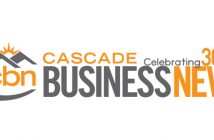Boomlits, GenX, Millenniums, Babyboomers, Traditionalists
Why are we all classified as a certain group? Most of us are either female or male. We’re parents or we’re not. We’re athletes or couch potatoes. We work or we’re retired. We smoke, we drink, we don’t. We’re judged, marketed to, made assumptions about based on precise criteria.
A lot of times these designations get very specific: from your height, weight, color of hair (or no hair), beverage choices and television selections.
Why? It’s largely based on data research for marketing professionals so they can decide how you’re going to vote, what television show you’ll watch, what consumer products you’ll buy or where you’re likely to travel. Research into our likes and dislikes has made it easier for companies and candidates to sway your opinions. We have a lot of information bombarding us all the time and it’s not always easy to decide what’s hype, what’s true, what’s untruthful.
The newest obsession with categories is the generation gap. In America, there are five living generations, which are fairly distinct groups of people. Research says that, in general, each age group has different likes, dislikes and attributes. They have (and will have) collective experiences as they age and therefore have similar ideals.
Because there are so many different generations of age groups, now researchers are wondering how we’re all going to fit into the workplace (especially with so many Babyboomers are choosing to work longer, perhaps never planning to retire). Babyboomers’ children, Generation X, have been waiting in the wings to take over positions of leadership while still having the older generation around and the Gen-X kids, Millennials, are kicking their heals behind them.
Of all the generations, 25 percent are Babyboomers. The choices they make about whether to retire or continue to work will have profound implications for job openings and Social Security spending. According to American Community Survey data, about 68 percent of baby boomers were still in the labor force (including Armed Forces) in 2012. The recent recession continued that trend as Babyboomers delayed retirement or reentered the workforce.
In general Babyboomers are noted to rely most on hard work and loyalty, building sweat equity in their careers over a series of promotions within the same company or creating their own. Gen-Xers emphasize working smarter to improve productivity. They seek the elusive “balanced” lifestyle. Babyboomers and their kids (Gen-Xers) have worked collaboratively together over the past decades to form the current economy.
However, the next workforce, the Millennials, are a more confusing lot. They grew up in the internet world of fast and constant information. They haven’t a clue what a phone booth is. In fact, they prefer not to talk on the phone, preferring the friendly text and social media for means of communication.
Marketing firms are trying to figure out to market to them because they’re still young and free to do what they want. Their workplace looks different, thriving on collaboration to achieve their greatest successes, and expecting a lot of free time and laid back atmospheres.
“While many hiring managers worry about their sense of loyalty, Millennials are the most highly engaged members of our workforce, are the nation’s next generation of innovators, and like it or not, they’re essential to closing skill gaps and creating long-term leadership hierarchies,” explains Dr. Curtis Odom, author, consultant and Fortune 100 Hiring Expert.
“Babyboomer hiring managers tend to skip over young job candidates, citing them as unqualified. When in reality,” notes Dr. Odom, “They’re afraid these young go-getters will end up replacing them. But Millennials are essential to future success of all companies and it’s a leader’s job to bring this generation into the fold without alienating older employees.”
Figuring this all out and having multiple generations working in the same place has employers stymied. However, a person’s birth date may not always be indicative of their generational characteristics. One of the things we need to learn as employers is to skip the age and presentation factor (nose rings, tattoos, piercings and casual dress).
The best way to develop a successful team of employees is to focus on the things that make all ages of people the best workers: attitude, willing to learn, collaborative mindset, hard work and of course the basic skills for the job at hand.
Attorney Bill Buchanan wrote a summarization of the workplace forum for City Club: “Some generational differences are attributable to age and maturity. No doubt, young neanderthals took a more athletic approach to hunting, gathering and courtship (with mixed success) than did their more experienced elders. As we age, we become more aware of our physical limitations and rely more on our experience and wisdom. We also become less tolerant of risk. Whether this phenomenon is a product of our DNA, our life experience or simply because we have invested more to lose (financially and intellectually) remains an interesting question.”
Something to remember about building the next generation of workers: don’t judge them on their age; they are not the same people today that they will be in 10 years, nearly everyone matures on some level and their ability and willingness to fit into different environments will change.
The attractive thing about placing us in categories is that we’re all different and yet we all have some similarities. This is what makes it so challenging for marketing professionals…good luck with all of that data!
THE GENERATIONS
Traditionalists: Mature/Silents
Born 1925-1945
50 million, 6 Percent of Population
Baby Boomers
Born 1946-1964
80 million, 70 Percent of Population
Generation X
Born 1965-1980
46 million, 22 Percent of Population
Generation Y/Millennials
Born 1981-2000
76 million, 2 Percent of Population
Generation Z/Boomlets
Born after 2001





